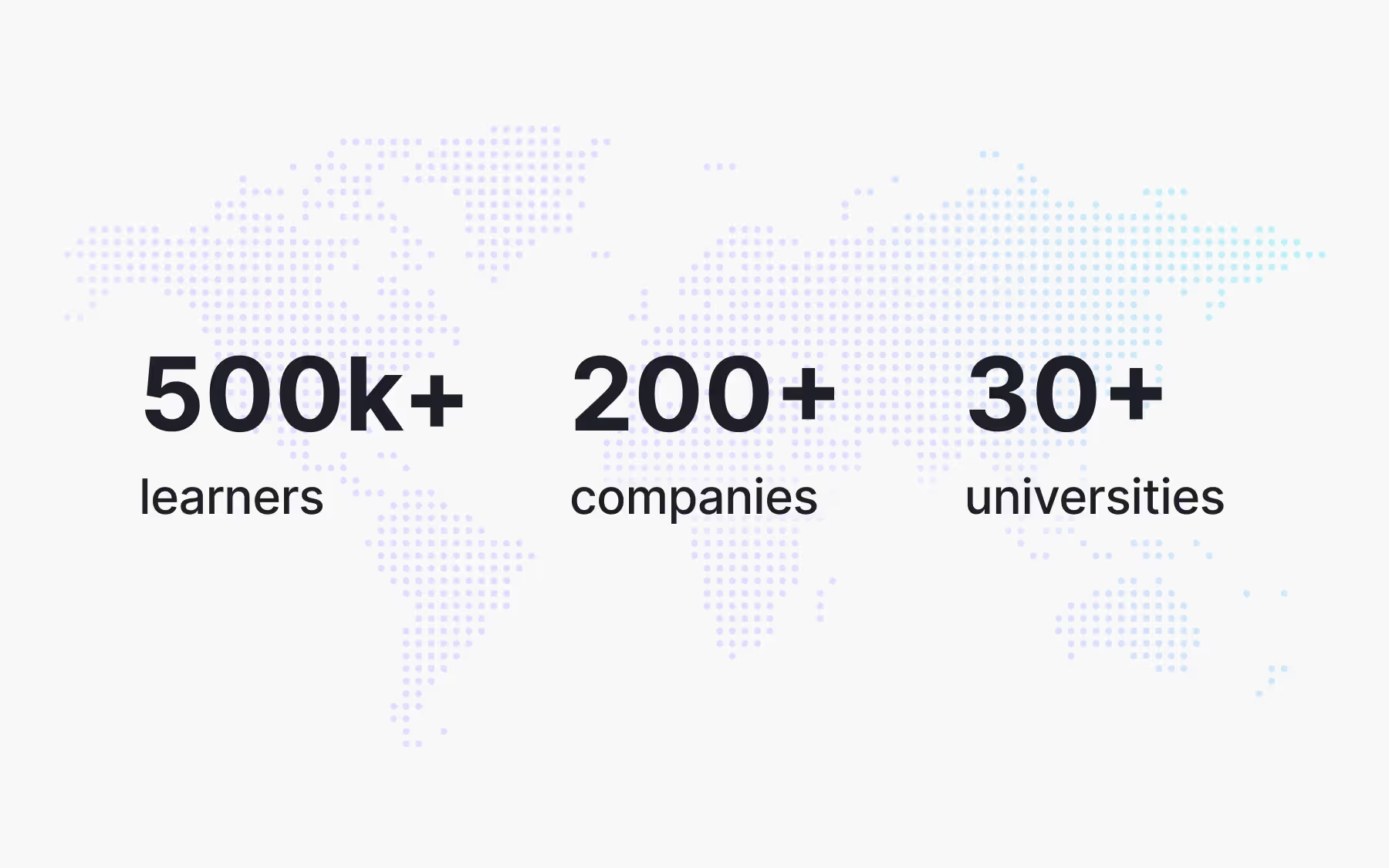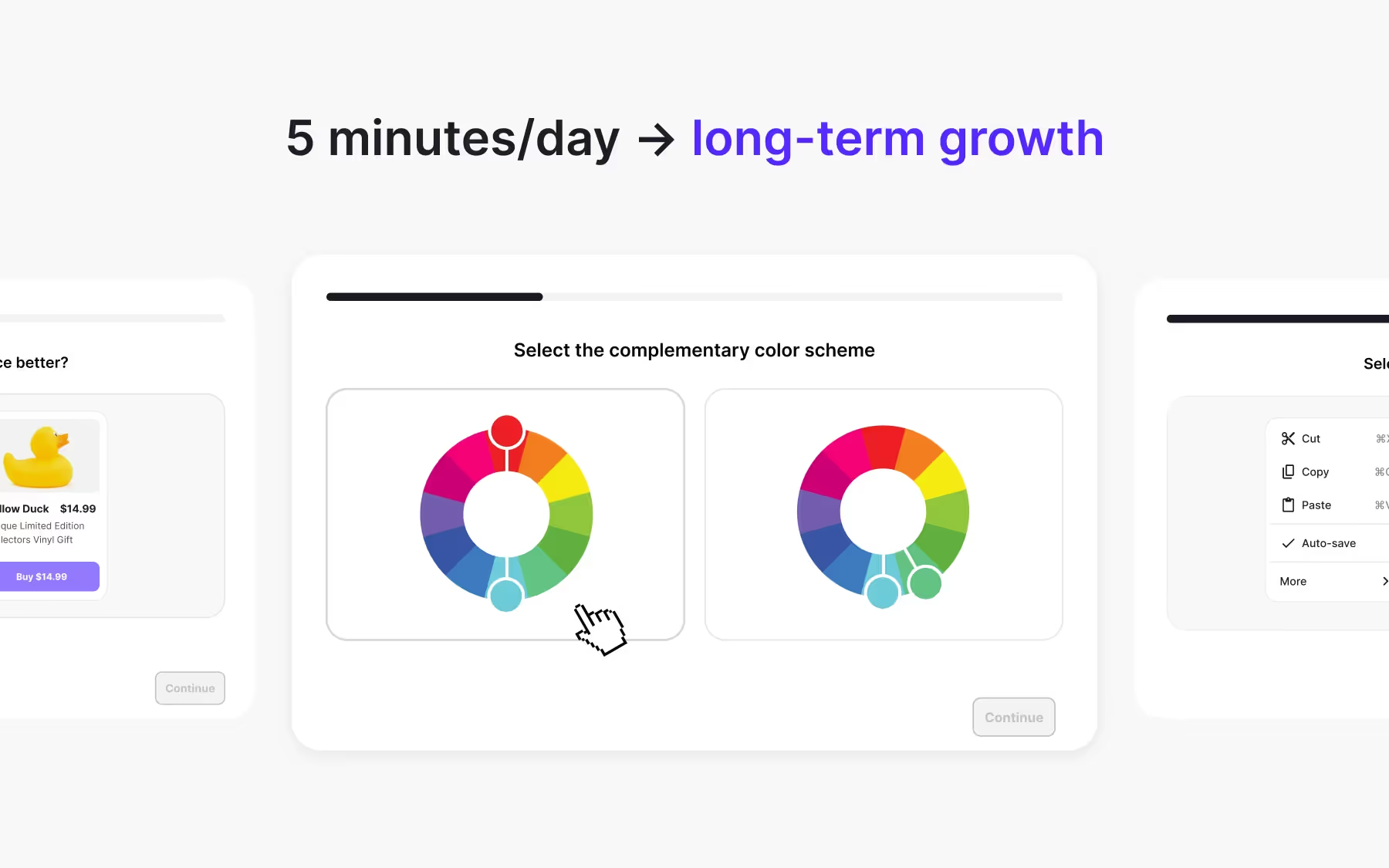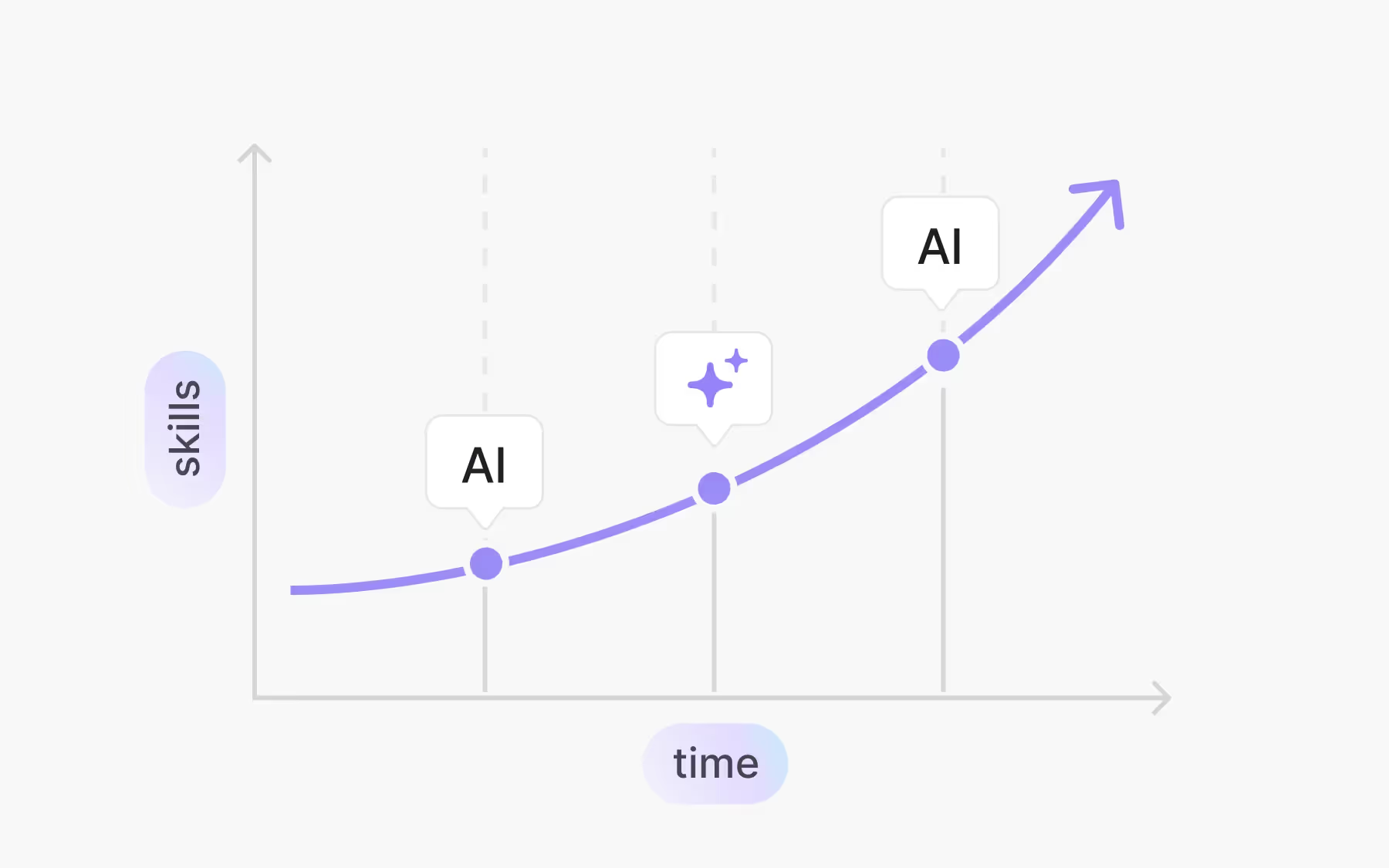
The modern skills crisis in product professionals and teams
Today, tech teams face an unprecedented skills crisis. AI, emerging technologies, and rising expectations demand continuous evolution from designers, product managers, developers, and quality engineers. Yet traditional education models struggle to keep pace with these rapid industry shifts.
High-priced bootcamps costing as much as two months' salary and even more expensive university programs are often inaccessible for many learners. Professionals already balancing tight deadlines and busy calendars find lengthy, rigid courses impractical. On top of that, most available education is geared toward complete beginners, leaving mid-level and senior professionals without relevant paths to keep growing in their roles.
Consequently, industry reports highlight that 95% of organizations report skills gaps in their teams, directly impacting revenue targets, innovation, and competitive advantage.

The skills gap is becoming more and more obvious.. Organizations frequently report substantial losses in productivity and revenue opportunities due to unaddressed skills gaps. As roles within product teams become more interconnected and specialized, the need for continuous, targeted education becomes even more critical.
In short, current educational methods aren’t designed for today's accelerated pace of professional growth.
Democratizing education for product teams
At Uxcel, our purpose is clear: to make high-quality product team education widely accessible. Initially focused exclusively on UX designers, our vision has expanded to include the entire product triad — UX, Product Management, and Engineering (coming 2026).
We directly address the skills crisis with practical, adaptive learning. Uxcel currently serves over 500,000 learners, including more than 200 companies actively upskilling their teams with our platform. Additionally, we've partnered with over 30 universities globally, integrating Uxcel into their curricula and classrooms.

Our approach emphasizes concise, impactful lessons averaging just five minutes daily. Learning integrates effortlessly into professionals' workflows through desktop, Slack, Microsoft Teams (coming soon), and mobile apps, making consistent growth achievable even amidst busy schedules.
The Uxcel method: Short, practical, effective
Modern learners require bite-sized, engaging content rather than lengthy lectures. Uxcel’s innovative microlearning modules deliver impressive course completion rates of 45–65%, significantly outperforming the industry norm of just 5–15%.

Active, gamified experiences drive retention rates up to four times higher compared to traditional learning methods. Real-time progress tracking provides managers with clear insights into their teams' growth, ensuring teams acquire essential skills without compromising productivity.
Our learners benefit not only from streamlined educational content but also from practical application. Immediate application of learned skills reinforces retention and demonstrates measurable progress in real-world scenarios.
How Uxcel empowers modern product teams
Uxcel is broadening its offerings beyond UX to provide comprehensive educational solutions for modern product teams. Our adaptive learning platform addresses core skills needed across UX, product management, engineering workflows, and essential soft skills such as collaboration, leadership, and business alignment, critical for effective teamwork.
While hundreds of platforms teach coding, almost none focus on the broader skills engineers need to excel in product teams. At Uxcel, instead of coding, we will empower engineers with critical insights into their roles within product teams, enhancing collaboration, optimizing productivity, and driving innovation. This strategic approach ensures engineering teams can effectively respond to industry demands and bridge critical skills gaps.
Our vision extends to a seamless integration of technical and soft skills, preparing teams not just to function, but to thrive and lead in their roles. This holistic skill development is foundational to building adaptive, resilient product teams.
The impact of AI on lifelong learning
AI and automation are reshaping industries, underscoring the need for ongoing, lifelong learning. Education can no longer be a single, static event; it must evolve continuously, becoming adaptive and personalized. Professionals need targeted skill-building that mirrors their industries' rapid developments.
Uxcel meets this demand through personalized learning paths driven by AI-powered assessments and recommendations. Our active AI tutor provides continuous personalization, ensuring education remains relevant, timely, and aligned with professional growth objectives.

As industries become increasingly AI-driven, proficiency in AI-adjacent skills becomes essential. Uxcel's forward-thinking approach equips learners to harness these technological advancements proactively.
Closing the product team skills gap
Continuous education is critical to innovation and organizational success. Uxcel provides the tools and insights product teams need to bridge skills gaps, improve cross-team alignment, and deliver measurable outcomes.
Teams equipped with ongoing education can better navigate technological advancements and market changes, enhancing both individual career trajectories and overall organizational performance. Companies investing in continuous learning through Uxcel report notable improvements in productivity, employee satisfaction, and retention rates, further reinforcing the business value of targeted upskilling.
Be a part of the movement
Uxcel is more than a learning platform. It's a global community dedicated to growth, innovation, and accessible, high-quality product education. Whether you're part of a large product team or an individual professional eager to enhance your skills, Uxcel offers pathways tailored to your learning needs.
Join the hundreds of thousands of professionals, leading companies, and prestigious universities already benefiting from Uxcel’s innovative learning approach.




